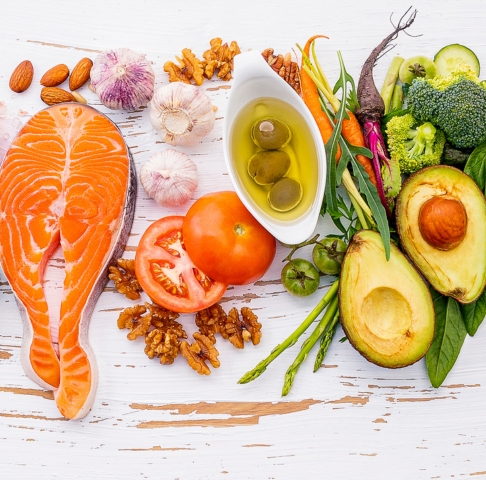Learning to cook after moving into my own place has been the crowning achievement of my #adulting phase. Like most people, I used to just dabao almost all my meals but rising food prices and the fact that most hawker items are high in salt and oil have made outside food less appealing.
Couple that with a high cholesterol warning from my doctor and I had no choice but to switch to healthier eating. But isn’t healthy food bland and boring? To answer that question, I spent the last eight months honing my culinary skills - watching an endless stream of TikTok recipe videos, and combing through dozens of food blogs to find out what makes for a healthy and delicious meal (if it even exists).
I was really surprised by what I found so here are five cooking tips for yummy meals that are good for your body.
1. Use MSG instead of salt
Growing up my mother always told me to stay away from MSG (monosodium glutamate) because it would cause my hair to drop. Well, it turns out these old wives’ tales are WRONG and MSG can be a healthier alternative to salt since it is lower in sodium.
A survey by the Health Promotion Board found that the average Singaporean consumes 3620mg of sodium daily1. That’s way higher than the recommended average of 2000mg! Excessive salt intake can lead to high blood pressure which in turn increases the risk of heart diseases and stroke.
Our tongues can’t taste excess salt and the fact is sodium is hidden everywhere in our foods. From sauces and seasonings to processed foods like fish balls and even raw meat or seafood, salt is present in everything we eat.
Knowing that, limit the mixing of your sauces with added table salt and try using some flavorful alternatives instead. A teaspoon of MSG for instance contains 615mg of sodium vs 1960mg in a teaspoon of table salt, giving you that same umami flavor with a fraction of the sodium. Don’t forget that you can also spice things up with natural herbs, spices and aromatics like garlic and ginger 🌶
2. Different Rice, Different Benefits
Rice is life. A Straits Times poll revealed that 8 in 10 residents2 say they consume white rice daily even though many were aware that it could raise the risk of diabetes. It blows my mind that a bowl of rice has more than twice the carbs found in a can of soda.
The good news is there are many varieties of this popular grain that differ in colour, flavour, and even nutritional value. Brown rice in particular is a popular whole grain alternative that is higher in protein and fiber than white rice. Protein helps you feel more satiated, so you eat less while fiber helps to regulate your blood sugar and insulin.
Feeling adventurous? Try black “forbidden” rice that was once reserved only for royalty in ancient China. Black rice contains the highest antioxidant properties out of all rice groups and is particularly rich in anthocyanins that lower the risk of certain cancers, including colorectal cancer. A fun fact I learnt about black rice is that it turns a dark purple when cooked 🍚
3. Honey has more calories than sugar
This might come as a rude awakening to health nuts everywhere but “nature’s perfect food” is not as healthy as we thought. Ms Chan Sau Ling a dietitian with the National Healthcare Group Polyclinics shared that honey contains 29.4 calories and 7.7g carbohydrates per 9g teaspoon3, which is more calories than white sugar. It’s not all bad news though as honey does contain vitamins and minerals that are absent in refined sugar. Honey also aids in digestion and promotes good gut health, which in my opinion makes it worth the calories. Just remember to use less of it the next time you’re making that protein smoothie 🥤
4. The truth about health labels – No Sugar Added, Trans-Fat-Free
I never used to read food labels when I went shopping but there are some dirty little secrets manufacturers hide on there. For instance, juices with no added sugar claims on their packaging can still contain a substantial amount from sugars naturally present in fruit. Instead, look out for the Nutri-Grade mark to find healthier choices that are lower in sugar and saturated fat.
The same goes for Trans-Fat free labels where goods can be advertised as having no trans-fat as long as it contains less than 0.5g per 100g. Trans fat increases the risk of heart disease and depletes the level of good cholesterol in the blood, a double whammy! Be sure to double check the packaging of your spreads like margarine, biscuits and even bread on your next shopping trip 🛒
5. Peanut butter is good for you
One of my favourite breakfast meals is a toasted peanut butter sandwich. Imagine my delight when I found out it reduces bad LDL cholesterol due to its high amounts of unsaturated fats. Peanut butter is also high in protein (8 grams every 2 tablespoons) so it’s great at preserving muscle mass when you’re trying to lose weight.
Of course, many peanut butters do contain extra ingredients like sugar, chocolate, honey, etc. so it’s important to eat it in moderation. I know I always have to stop myself from reaching for that pack of Reese’s in the snack aisle 🍫
Be the MasterChef of healthy eating
I am still very much a novice on my food journey, but I hope the facts I shared can help you put together nutritious meals you’ll still enjoy! Don’t forget to strengthen your body through exercise as well. You can also protect yourself against cancer and stroke which are linked to diet and lifestyle with a critical illness plan. There are even plans in the market that cover you even if you have pre-existing illnesses like high BMI, high cholesterol, etc.
Hungry for more tips on healthy living? Check out our article on how to combat belly bloating or find out if all that BBQ food is secretly giving you cancer.
Notes
1. Source: Health Promotion Board, Singapore, “National Nutrition Survey”, accessed on 30 October 2023.
2. Source: The Straits Times, Singapore. “Hooked on white rice, but some ready to change diet”, accessed on 30 October 2023.
3. Source: Health Hub, Singapore, “The Truth Behind Food Labels and Food Health Claims”, accessed on 30 October 2023.








